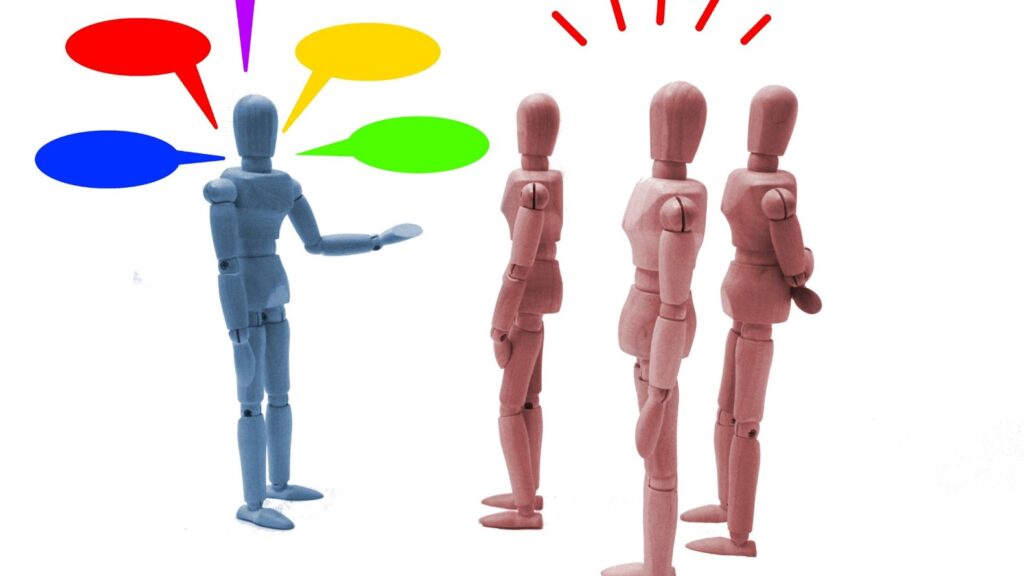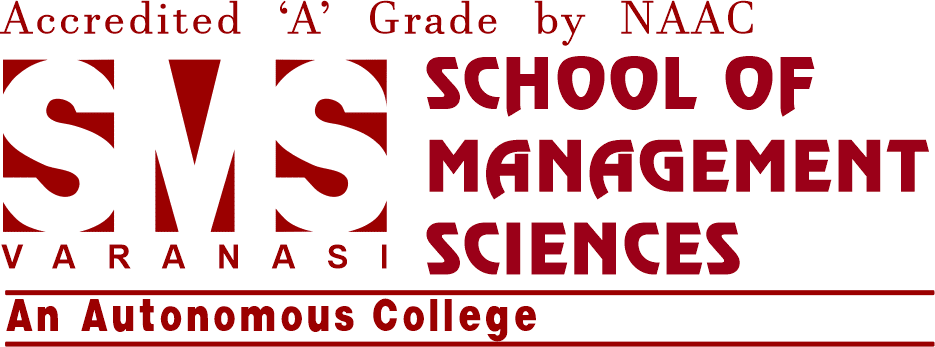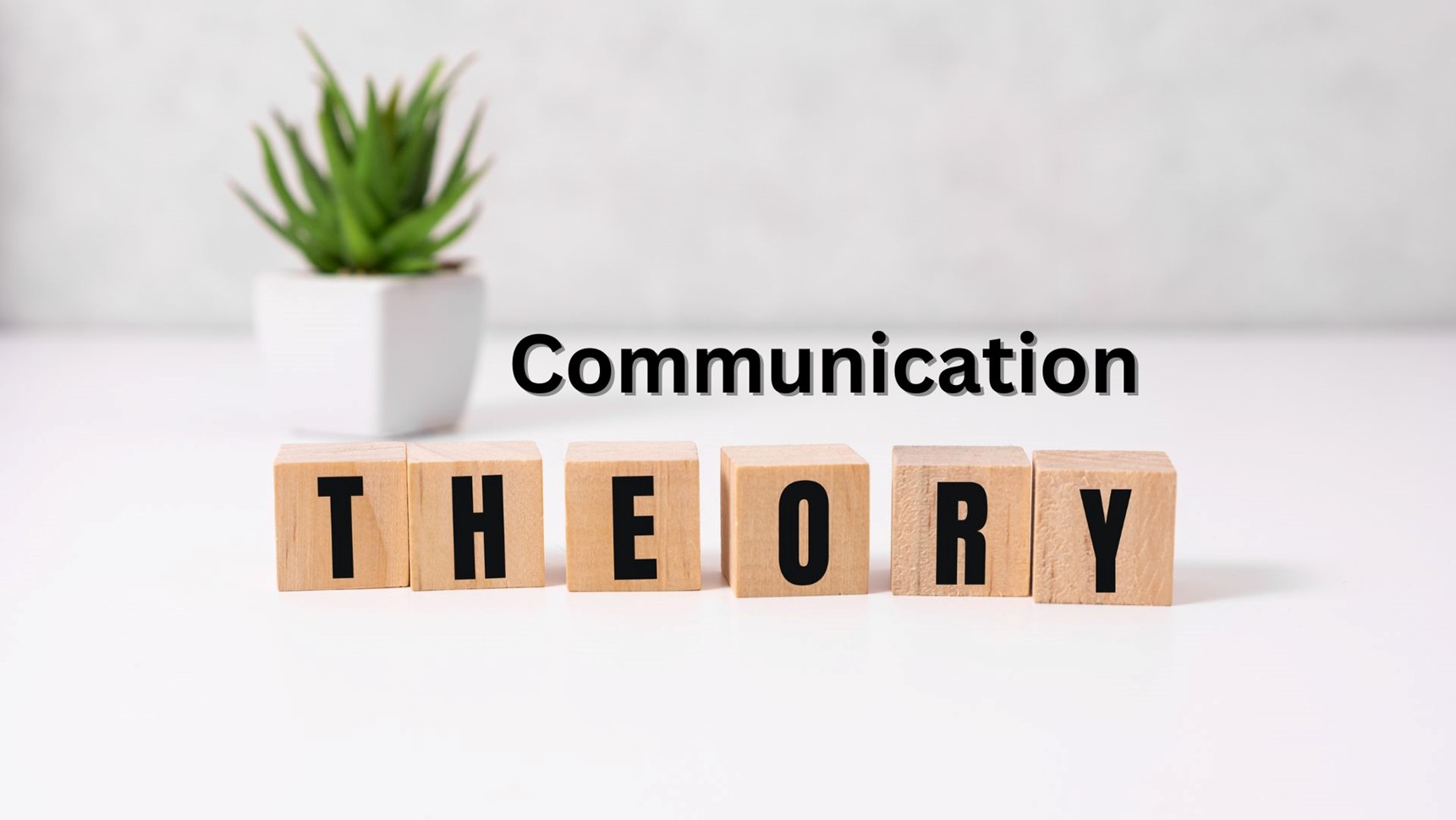In today’s world of buzzing media and ever-evolving cultural studies, terms like “Communication” and “Information” can seem a bit foggy. Yet, they are central to how we live, learn, and connect.
Think about the various ways we communicate every day: from formal conferences and casual meetings to vibrant melas and grand processions. Our tools for this vast exchange range from newspapers and radios to cinema and TVs.
And behind the scenes? A bustling crew of journalists, advertisers, PR experts, and many more – all playing their part in the massive world of mass communication.
As we’ve journeyed from the Information Age to the Communication Age and now into the Network Age, our understanding and means of communication have come a long way. Historically, ‘communication’ was tied to ideas of transport and geography, like delivering a message from point A to B. But dive into its origins, and you’ll find it comes from the Latin words ‘communis’ (common) and ‘communicare’ (to share) – giving birth to concepts of community, sharing, and togetherness.
Interestingly, in India, a similar essence is captured by the term ‘sadharanikaran’.
So, what’s communication really about? It’s more than just talking or texting. It’s a special kind of human connection where we come together – be it over dinner, during a festival, or even in times of loss.
Today, we’re not just communicating with people. We chat with our computers, ask questions to voice assistants, and even set commands for robots at home. With machines talking to each other and innovations like brain-controlled gadgets on the horizon, the future looks even more connected.
For all you Mass Comm aspirants eager to decode the signs and symbols of this dynamic world, this article promises a fresh and engaging look at introductory communication theories. Dive in and let’s explore together!
Communication as a Social Science

Diving into the realm of communication unveils a rich tapestry, intricately woven with the threads of diverse social sciences, encapsulating Literature, Journalism, Sociology, Psychology, and Political Science, to name a few. Today, communication theories have evolved from being elite dialogues to encapsulating the voices of everyday communicators. Hence, we can say that communication is a phenomenon deeply interwoven with our societal norms and practices.
Such a democratisation of communication, however, did not materialise in isolation. The realms of politics and business were monumental in steering this shift. Political scientists, once captivated by the mighty tool of propaganda, nudged governments and businesses to align their sights on refined communication strategies.
The scenario during the World Wars, for instance, witnessed an amplified utilisation of propaganda tools, with entities like the U.S.’s Committee on Public Information (CPI) being established to sculpt public opinion and later, the Institute of Propaganda Analysis being introduced in the 1930s to counteract Nazi propaganda.
Yet, the narrative of communication studies is not solely tethered to politics. The emergence of mediums such as the telegraph, cinema, radio, television, and more recently digital media, enthralled the business world, fostering a symbiotic relationship between media research and advancements in marketing and advertising.
Globally, diverse approaches shaped communication studies. The U.S., embedded within political concerns, crafted its path, while Britain and France leaned towards a foundation rooted in literary and linguistic studies. Conversely, Germany was notably swayed by the neo-Marxist scholars from the Frankfurt School.
In the contours of post-Independence India, communication studies were ardently adopted with a focus on disseminating narratives of national unity, sparking socioeconomic development, and championing family planning. Institutions like the Indian Institute of Mass Communication (IIMC), established in 1965, played pivotal roles in shaping the trajectory for training and research in the field.
At SMS Varanasi, we believe that exploring communication transcends beyond the mere understanding of messages; it signifies delving into the socio-political and cultural currents that sculpt our collective narratives and societal frameworks.
For Mass Comm aspirants eager to unravel these intricacies, your journey promises a rich tapestry of learning, exploration, and profound insights into the complexities of communication theories and mass communication, ensuring a holistic understanding of the world that communicates around us.
The Need for Communication

Communication, in its many hues, is as essential as the very air we breathe. It pervades every corner of the human, animal, and plant worlds. To communicate is not just a luxury but a necessity, as fundamental as our needs for sustenance and rest. Its importance mirrors ancient traditions like the sacred ‘Word’ or ‘Aum’ and ‘Shabda Brahman’ from Indian lore.
Communication isn’t just about exchanging words. It envelops music, imagery, gestures, postures, and so much more. This vast umbrella isn’t an exclusively human domain either. Animals and birds, for instance, have their own dialects, using sounds, visual cues, and even smells. The melodious tunes of birds, the rhythmic croaks of frogs, and the intricate dances of bees – all serve to convey crucial information within their communities.
For humans, the impulse to communicate is as potent as our urges to eat, sleep, or form bonds. It is both an individual requirement and a social one. In many North Indian cultures, children use the gesture of ‘kutti’ to signify exclusion, showcasing the inherent understanding of the pain of isolation. Think about the severity of solitary confinement in prisons; such isolation essentially deprives one of their fundamental right to communicate.
Indeed, communication is our bridge to the world – be it physical, biological, or societal. It safeguards us, evokes our emotions, and meets our basic needs. Without it, we’re lost, isolated, and in torment.
From an evolutionary standpoint, this concept is rooted deep within us, tracing back to our journey from simpler organisms. For most animals, communication via their senses is pivotal for survival, sourcing food, ensuring protection, and successful reproduction. After all, in the wild, isolation from a group or tribe can spell doom.
The distress of isolation can be profound. “Excommunication”, as Malcolm X termed it, can be emotionally wrenching. The risks aren’t just psychological. Prolonged isolation can trigger hallucinations and detrimental effects on one’s mental and physical well-being. Surprisingly, studies have found that single men lacking close friends have an elevated risk of heart ailments.
Yet, like all good things, communication requires balance. Both its scarcity and overabundance can be disorienting. While sensory deprivation can invoke anxiety and impair judgement, an overload can induce symptoms akin to schizophrenia.
The modern era, often labelled as the age of Mass Communication, brings with it an “information explosion”. This perpetual connectivity, some communication theories suggest, might be overwhelming us, perhaps even “hacking” into our innate sense of happiness.
For budding Mass Comm aspirants, understanding these nuances is pivotal. The realm of communication is vast, intricate, and profoundly human. As they delve deeper, they’ll find that at its heart, it’s all about connecting, sharing, and understanding the world and its myriad inhabitants.
Communication and Language

The story of communication is an age-old tale. Evolving from simple sensory interactions to the sophisticated realm of symbolic exchanges, humans have always found ways to convey, share, and connect. From non-verbal cues that spanned the earliest chapters of our history, we transitioned to the complexity of verbal and written words, painting the narrative of our growth.
A prominent theme of this narrative is the intertwinement of language and culture. They are so intrinsically linked that to understand a culture fully, one needs to grasp its language. It’s no wonder then that communication theories posit language as more than just a tool; it’s an embodiment of a community’s identity and essence.
A quick look at the arts is a testament to this. From the primaeval stories told through cave paintings to the modern wonders of VR and AR, our need to communicate remains a constant. However, the modes and technologies through which we express ourselves evolve with time.
However, with evolution comes the risk of extinction. The death of a language doesn’t just signal the loss of words but also the extinction of the rich tapestry of its culture and modes of communication. The statistics are sombre: over 400 languages stand on the brink of oblivion, with another 3,000 labelled as endangered.
Mass Communication highlights the vast linguistic diversity that paints our global landscape. A report from Ethnologue brings this into perspective: there are over 6,800 languages scattered across our world! Delving deeper, Asia and the Pacific boast of 3,200 languages, with Papua New Guinea itself being home to 800. Africa chimes in with 2,400, while the Americas and Europe contribute around 1,000 and 200 respectively.
The top 5 most common languages in the world, by number of native speakers, are:
- Mandarin Chinese (1.119 billion speakers)
- Hindi (602 million speakers)
- Spanish (559 million speakers)
- English (534 million speakers)
- Arabic (372 million speakers)
As Mass Comm aspirants dive into the intricacies of communication, understanding these languages and their rootedness in culture becomes imperative. In a world teeming with voices, we need to listen, learn, and ensure that no language, no matter how faint its whisper, goes unheard.
Communication and Information

At the heart of our interconnected world lie two fundamental concepts: communication and information. Often used interchangeably, these terms, as illuminated by Communication Theories, represent distinct experiences.
Imagine communication as a dance, a harmonious experience where two or more individuals connect, interact, and understand each other. It’s not just about exchanging words or gestures; it’s about forming a bond, an entire situation that fosters a human relationship.
On the other hand, information is more straightforward. Think of it as the steps in the dance – message bits that could be verbal or non-verbal. Unlike the all-encompassing embrace of communication, information is unilinear, moving from one point to another without necessarily fostering a bond.
But here’s the catch: while information in itself might seem cold and transactional, it can blossom into communication if deemed meaningful. However, as Mass Communication delves deeper into today’s digital age, a disturbing trend emerges.
Information, instead of being a bridge, often becomes a commodity. Think about the pop-up ads or the targeted content we receive daily. In these unequal or commercial exchanges, the very essence of authentic communication gets distorted.
Perhaps the most evident example of this paradox is business communication. While it sounds like an elegant marriage of two important concepts, it’s somewhat of a contradiction. When communication takes the cloak of business, its intrinsic value shifts.
No longer about understanding and connection, it becomes a commodity with an exchange value, shifting the narrative from mutual understanding to transactional exchanges.
Ricardo C. Noseda, in his exploration, captures this duality beautifully. He describes communication as a process that creates a shared consciousness between individuals. In contrast, information remains a one-way street, a unilateral transfer of messages from an Emitter to a Receiver.
For Mass Comm aspirants aiming to navigate this intricate world of messages and meanings, understanding this distinction is crucial. It’s not just about sending or receiving messages; it’s about forging connections, understanding contexts, and ensuring that in the vast sea of information, the essence of human communication remains undiluted.
The Right to Communicate

In the vast realm of Communication Theories, one principle stands out for its universal significance: the Right to Communicate. While many of us are familiar with the Right to Information, enshrined by the United Nations Charter and acknowledged by India’s Right to Information (RTI) Act in 2005, the Right to Communicate goes deeper.
Imagine, for a moment, a world where you can access information but cannot share your thoughts, feelings, or beliefs. Sounds restrictive, doesn’t it? That’s because the Right to Communicate is more fundamental than simply the right to information.
It is what grants individuals their inherent dignity and freedom. It’s the bridge that enables participation in various spheres of life, be it social, religious, economic, or political.
But what exactly does this right entail? Rooted in Mass Communication studies, this right is seen as a cornerstone of our human rights. It is comprehensive in nature, going beyond the freedoms of speech, press, and even religion.
In essence, it signifies that communication isn’t just about speaking; it’s about being heard, understood, and responded to.
For Mass Comm aspirants, it’s crucial to understand the vast scope of this right. It’s not just an individual’s privilege. Its wings spread out to groups, nations, and even the international community. And with such breadth come legal, economic, and technological implications. It’s a web of rights and responsibilities that ensures that every voice, no matter how soft or loud, has a rightful place in the chorus of humanity.
Furthermore, this right is closely linked to the democratization of communication. It champions access, participation, and promotes a two-way flow. In a world increasingly defined by digital realms, ensuring that everyone, everywhere, can communicate and be communicated with is paramount.
For those keen on exploring the multi-faceted world of Mass Communication, the journey is not just about understanding how we communicate, but also about championing the right to do so. After all, in the dance of human interactions, every step, every gesture, and every word counts.
Defining Communication

The world of Communication Theories is both vast and intriguing. At its heart, communication is all about interaction, interchange, dialogue, sharing, and fostering a sense of commonness. As the eminent scholar Denis McQuail aptly puts it, communication both increases commonality and thrives upon its elements.
But what is it that brings people together? For many, it’s the allure of a common language. Language, intertwined with culture, is the fabric that weaves individuals into a community. Sharing a culture, a language, or an interest nurtures this sense of commonality, creating a vibrant community spirit.
Delving deeper, the ancient Sanskrit perspective offers a profound insight. The term ‘Sadharanikaran’ embodies this essence of ‘commonness’. It’s all about the magic that unfolds when messages resonate among ‘sahridayas’, those equipped with the heart and capacity to truly receive them. Here, the emphasis intriguingly shifts to the receiver, away from the sender.
After all, ‘sahridaya’ beautifully translates to ‘of one and the same heart’.
Communication is more than just the exchange of words. It presupposes a shared symbolic environment, laying the foundation for social interaction and fostering a sense of community. There’s a notable distinction to be made between mere ‘communication’ and ‘human communication’.
In Denis McQuail’s view, human communication goes beyond the superficial, encapsulating the transmission of meaningful messages. This includes everything from oral and written words to visual and olfactory signals and even societal symbols like grand buildings and parades.
In the bustling urban landscape, symbols of communication are evolving. The rise of shopping malls, department stores, and multiplexes is not merely about commerce; they have become pivotal forms of communication in their own right.
Ashley Montagu and Floyd Matson shed light on a fascinating aspect: communication as a ‘clash of symbols’. It’s a realm far more expansive than just media and messages. It’s the very ground where communities meet and bond.
Meanwhile, W. S. Cardon’s insights into kinesics reveal that body language often speaks louder than words, with our cultural interactions driven more by mutual participation in rhythmic patterns than discrete messages.
Sociologists, like Thompson, argue that communication should be viewed as a ‘form of action’ set within a social context, intertwined with economic, political, and symbolic power. The world of Mass Communication underscores how media, particularly the digital kind, is reshaping social interactions, crafting new avenues of connection.
For Mass Comm aspirants eager to traverse this intricate landscape, it’s a revelation to see that communication is not just about talking or listening. It’s about connecting, sharing, and creating a shared heartbeat in a world bursting with diverse rhythms.
Types of Communication

Communication is an intriguing tapestry woven with diverse threads, each representing a unique type of interaction. This intricacy is highlighted when we study the various Communication Theories that dissect this vast domain.
For the sake of clarity and understanding, it’s often helpful to classify communication into typologies, although they may overlap in real-world scenarios.
At the core, communication can be verbal or non-verbal, technological or non-technological, mediated or non-mediated, and participatory or non-participatory. These categories offer a snapshot of the multitude of ways in which we interact.
A straightforward way to understand communication is by considering the size of the social group involved. From solitary intrapersonal communication, where we delve into self-reflection or perhaps even transcendental meditation, to mass communication, which casts a wide net reaching large audiences, the scope is vast.
In between these extremes, we find intimate interpersonal communication and broader group communication. Today’s digital age also introduces us to electronic communication, shaping new-age virtual communities and teleconferencing spaces.
For Mass Comm aspirants, it’s critical to grasp the nuances of these interactions. For instance, interpersonal, face-to-face communication stands out as the most authentic form. Direct, unfiltered exchanges between two individuals are enriched with verbal dialogues, body language, and sensory cues.
Such interactions can be classified further into focused and unfocused types. While the former is deliberate and intentional, the latter, like ‘people watching’, is more passive. But in both cases, cultural interpretations play a significant role.
This direct form of communication evolves through stages: starting with phatic greetings, moving into more personal dialogues, and reaching the intimate stage where deeper sentiments are exchanged.
As we move into group communication, the intimacy dilutes. Feedback becomes slower, requiring robust public speaking skills for efficacy. Think of situations like religious services, village markets, or traditional gatherings.
Technology, particularly the rise of electronic communication, has transformed traditional norms. Despite the conveniences of electronic mediums, face-to-face communication still holds sway, especially in scenarios with power dynamics. It’s no surprise that despite the dominance of mass media, direct methods like door-to-door sales remain impactful.
Group communication introduces another fascinating element: acting. Deception in group settings isn’t instantly detected, making events like theatre performances intriguing examples of group communication. Cultural influences cannot be ignored, as they shape the interpretation of both verbal and non-verbal cues.
Feedback, an integral component of communication, is instant in interpersonal settings but delayed in group scenarios. Savvy feedback management, as seen in advertising, can even pivot communication towards subtle manipulation.
For those diving into Communication Theories or aiming to excel in Mass Communication, the realm of communication is vast and captivating. It beckons aspirants to explore, understand, and master its myriad facets, shaping the narratives of tomorrow.
Mass Communication

Mass Communication, often simplified as large-scale communication, has taken varied forms throughout history. When one delves into the intricate layers of Communication Theories, the dynamic interplay between group communication and mass media surfaces.
Expanding Horizons: Group Communication to Mass Media
From age-old practices like books and cinema to modern marvels such as the internet and TV, mass communication tools have consistently amplified group communication.
However, a common misconception exists. These channels, while instrumental, aren’t the phenomenon of communication in themselves; they are processes.
Historically, people like Daniel Lerner and Wilbur Schramm have praised these mediums, calling them ‘mobility multipliers’ and ‘magic multipliers’ respectively. But are these claims exaggerated?
The Reality in Developing Societies
Terms like ‘mass communication’ and ‘mass media’ might not resonate aptly for developing societies. Taking India as an example, only the affluent segments, both in urban and rural regions, truly reap the benefits of these modern communication forms.
A considerable chunk of society, mainly the marginalised, still remain in the shadows, unsung and unseen. Thus, in many ways, mass media in such contexts might echo more of the elite’s narrative.
Traditional Media: The Unsung Champions
Remarkably, nearly 20% of India’s population can’t access what we label ‘mass media’. Instead, traditional community media like keertan, yakshagana, folk songs, dances, and theatre continue to be the heartbeats of many communities.
They are less costly, more accessible, and importantly, more personal and participatory. Unlike modern mass media products, which are mass-produced, traditional forms remain genuine and engaging.
Modern Mass Media: A Two-Edged Sword
Modern mass communication, in essence, is ‘communication at a distance’. It relies heavily on technological mediation. As Thompson suggests, this form can be seen as ‘mediated quasi-interactive communication.’ There’s an evident rift between the creators and consumers, and very few mediums truly bridge this gap.
‘Mass-line’ Communication: A Grassroots Approach
Some influential figures, like Mao Zedong and Mahatma Gandhi, have implemented what Kusum Singh termed ‘mass-line’ communication. This strategy, ideal for Mass Comm aspirants to study, hinges on a blend of multiple channels and robust non-charismatic leadership.
Its foundation is genuine respect, transparency, and non-manipulative information, underscoring the power of grassroots-level communication for mass outreach.
The Era of Interactive Communication
Termed ‘interactive communication’, the ‘new’ media, encompassing devices like mobiles, computers, and the internet, has revolutionised the landscape. They offer a blend of interpersonal, group-oriented, and mass-focused channels.
A standout feature? ‘Asynchronicity’—the freedom to send and receive messages at one’s convenience. This shift is epitomised by the rise of Web 2.0 social media platforms. These platforms have not only moved from private dialogues to public forums but have also spotlighted the ‘performance of the self’, altering our perceptions of identity, authenticity, and human relationships.
For budding Mass Comm aspirants, the world of communication is as vast as it is fascinating. It promises a journey filled with discoveries, challenges, and immense rewards.
Western Models and Theories of Communication

From ancient Greek philosophers to contemporary scholars, the West has produced a plethora of Communication Theories. For Mass Comm aspirants, understanding these theories is akin to a rite of passage.
Aristotle’s Legacy
Aristotle, often considered the forefather of Western communication, gave us the foundations of rhetoric. At its heart, rhetoric comprises the speaker, the speech, and the listener. Aristotle’s primary focus? Discovering the means to persuade, making his insights the cornerstone for many subsequent theories.
The Lasswell Model
Building upon Aristotle’s ethos, the Lasswell Model seeks to answer quintessential questions: Who communicates? What is communicated? Through which medium? To whom? And finally, what effect does it produce?
In doing so, it identifies the core functions of communication: surveillance, correlation, and cultural transmission. However, it views communication as a tool to achieve desired effects, echoing Aristotle’s persuasion emphasis.
Delving into Mathematics: Shannon and Weaver
Turning to the realm of mathematics, Shannon and Weaver introduced a model focused on the information source, transmitter, channel, receiver, and destination. Their concentration was on the optimal use of communication channels. Yet, this seemingly mathematical model has been adapted for human communication too.
Schramm’s Human-centric Approach
Schramm, inspired by Shannon and Weaver, tailored the model to better fit human communication. Central to his perspective is the process of encoding and decoding messages. Together with Charles Osgood, Schramm also proposed a circular model where the sender and receiver stand on equal footing.
Berlo’s Dynamic Perspective
Berlo envisioned communication as an ever-evolving process. He discarded the rudimentary “bucket theory”, which suggested a mere transfer of ideas. Instead, he perceived the process to be more complex and multi-dimensional.
A Broader Critique
Over time, certain critiques have emerged. A notable one is the unilinearity in many Western models, which predominantly highlight an active sender transmitting to a passive receiver. Fortunately, contemporary Communication Theories have evolved, shifting the focus from mere effects to the essence of communication relationships and shared experiences.
Semiotics: Beyond Words
Communication transcends beyond mere words; it involves a dance of signs and symbols. This understanding, rooted in semiotic approaches, emphasises language as a sign system.
This domain has been enriched by luminaries like C. S. Peirce, I. A. Richards, and Ferdinand de Saussure, and further expanded by influential thinkers like Jacques Derrida, Judith Butler, and Gilles Deleuze.
Communication as Ritual
James Carey, inspired by Victor Turner’s studies, proposed the ritual model of communication. Moving away from models centred on social control, Carey embraced a view where communication symbolises the creation, representation, and celebration of shared beliefs. This ritual perspective has found resonance in the realm of Cultural Studies theory.
In conclusion, the journey of Western Communication Theories mirrors the intricate web of communication itself: transitioning from structured, mechanistic views to richer, more holistic perspectives. For Mass Comm aspirants, this evolution offers not just historical insight but also a lens to understand the complex dynamics of Mass Communication today.
Communication as ‘Dialogue’

Embarking on a journey through Communication Theories, one cannot help but be drawn to the concept of communication as a ‘dialogue’. While Western perspectives often dominate, it’s vital for Mass Comm aspirants to embrace a richer, more varied tapestry of insights.
The Latin American Lens: Liberation & Participation
At the heart of Latin American perspectives on communication lie core elements: ‘liberation’, ‘participation’, and ‘conscientization’. Sparked by thinkers like Paulo Freire and the principles of liberation theology, this perspective challenges the traditional Western ‘transmission’ model.
Instead of purely theoretical deliberations, it underscores the significance of ‘praxis’, placing the application of theory at its core.
Power Dynamics in Communication
Communication is more than just exchanging messages; it represents intricate power relationships. It illuminates disparities across class, caste, and social realms, aligning closely with Marxist tenets.
Critical Communication Theories, like the Frankfurt School and cultural studies theory, accentuate this theme, revealing the underlying power struggles within communication processes.
Glimpses of Indian Classical Texts
Delving into Indian Communication Theories offers a fresh panorama. Rooted in classical texts and cultural ethos, a central theme is ‘sadharanikaran’ – a drive to achieve commonness. Here, communication unfolds between ‘sahridayas’, or individuals attuned to a message.
The Indian perspective is deeply spiritual, emphasizing the human psyche and emotions. It cherishes the search for deeper meaning, as highlighted by scholars like Wimal Dissanayake.
A Philosophical Exploration: Virat Purush & Dharma
T. B. Saral provides a compelling Hindu philosophical perspective, drawing from the concept of Virat Purush and the age-old law of Dharma.
While Western communication may often skim the surface, Indian Communication Theories delve deep, seeking profound truths. This contrast between linear Western thinking and the holistic Indian philosophy offers Mass Comm aspirants diverse frameworks to interpret Mass Communication.
The Islamic Communitarian Perspective
Forged by scholars Hamid Mowlana and Majid Teharanian, the Islamic view positions the ‘umma’ (community) at the heart of communication. Far from mere persuasion, the essence of Islamic communication lies in fostering and nurturing community ties.
In summary, understanding communication as ‘dialogue’ encourages a more inclusive and comprehensive appreciation of Communication Theories. Embracing diverse perspectives, from Latin American to Indian, enriches the discourse, providing invaluable insights for future communication enthusiasts.
Barriers to Communication

Diving into the expansive realm of Communication Theories, Mass Comm aspirants swiftly recognise that the path to effective communication is often littered with obstacles. These barriers, broadly termed as ‘noise’, can drastically alter the meaning and reception of messages. Let’s unravel these barriers to gain a clearer understanding of what stands in the way of seamless communication.
What Are Communication Barriers?
In its simplest form, communication barriers are obstacles that disrupt the flow of communication. While perfect communication is often touted, it’s a utopian concept, rarely found outside mystical or spiritual realms.
Physical Barriers
- Environmental Interferences: External distractions like loud music, traffic noises, or environmental stresses such as high temperatures and poor ventilation can hamper effective communication.
- Ignorance of the Medium: Sometimes, unfamiliarity with a particular communication method, say a new technology, acts as a deterrent.
Psychological Barriers
Our minds, shaped by experiences and culture, often become inadvertent culprits in miscommunication. Personal biases, the weight we place on self-image, resistance to change, and the inherent need to justify oneself can cloud message interpretation. Additionally, fear, while it can sharpen focus, often leads to tunnel vision in communication.
Linguistic and Cultural Barriers
Language, an intrinsic part of Mass Communication, reflects the cultural nuances of its speakers. Depending on one’s cultural background, words and gestures can be interpreted differently. This barrier is especially poignant in our diverse world where words carry both objective and subjective meanings, and non-verbal cues vary dramatically across cultures.
Mechanical Barriers
Every Mass Comm aspirant knows that technology, though an enabler, can sometimes be a hindrance. ‘Channel noise’ like a bad telephone connection, slow internet speeds, or malfunctioning equipment can disrupt the message delivery.
Organisational Barriers
Organisations, with their complex structures, can sometimes unintentionally stifle communication. The size of the entity, physical distance between teams, job specialisations, and even power dynamics can influence how a message is received. Add to that the channels used for communication, and the recipe for misunderstandings is almost complete.
Online Noise
The digital realm is not without its challenges. Mass Communication today contends with online noise such as spam, pop-ups, and targeted advertising that can divert or dilute the primary message.
Bridging the Communication Gap
Understanding these barriers is the first step to surmounting them. Active and effective listening, coupled with a genuine intent to understand, can help navigate the labyrinth of communication pitfalls.
In conclusion, while barriers are a natural aspect of communication, a deeper understanding of Communication Theories can equip Mass Comm aspirants with the tools to tackle and even anticipate them. Communication, after all, is not just about speaking, but ensuring that the message is received as intended.
Information Technology and Society: A Brief History

In our journey of understanding Mass Communication, it’s crucial to dive into the evolution of information technology. This rich tapestry of innovation not only underscores the progression of Communication Theories but also offers Mass Comm aspirants a profound understanding of their field’s roots.
Origins of Mass Communication
Centuries before Johannes Guttenberg introduced his revolutionary printing technique from movable type in Mainz, Germany, in 1440, the inception of modern mass communication was already taking shape. It was rooted in Asian advancements, especially in printing and paper invention.
This transformative shift from manual copying to machine-driven processes meant that books became more accessible, transcending the confines of monastic circles. Consequently, this proliferation in printed material simplified communication, catalysing movements during religious, political revolutions and freedom struggles.
The First Wave: A Print Revolution
When Marshall McLuhan described printing as an ‘extension of the eye’, he highlighted the epochal shift from a communal, oral culture to a more visual and linear one. This era, where power presses of the 19th century churned out daily newspapers, transformed the linear communication landscape into a more vibrant mosaic.
The Second Wave: The Age of Broadcast
The 19th century bore witness to a myriad of innovations: from the telegraph and telephone to photography. Pioneers like Edison introduced the world to the phonograph and the movie camera.
With the inception of radio, the importance of oral speech was rejuvenated, while movies and TV initiated an audio-visual revolution. The advent of satellite communication, as McLuhan aptly observed, shrunk our vast world into a ‘global village’.
Yet, this era was not devoid of critique. Many lamented the dominance of Western-centric views, which overshadowed the contributions of other ancient traditions.
The Third Wave: Rise of the Machines
Parallel to the earlier waves, the third wave surged, with its peak in the 20th century. Computers, in this era, radically transformed information storage, retrieval, and transmission. The dawning of artificial intelligence and automation hinted at the cusp of yet another transformation—the fourth wave.
The Fourth Wave: Information at our Fingertips
Kicking off with early technologies like ‘Teletext’ and ‘Videotex’, the 1990s onwards saw a veritable explosion in the realm of multimedia, cellular telephony, and the internet.
This ‘Age of Information’ heralded a time when information, albeit more accessible to urban and affluent segments, began touching various sectors in India. With the rollout of INSAT satellites, both domestic and international communication underwent a sea change.
As Mass Comm aspirants are acutely aware, this era also saw the meteoric rise of social media, mobile telephony, and a plethora of convergent technologies. Yet, it’s also an age tinged with caution, especially post-Wikileaks and Snowden, spotlighting the potential misuse of these powerful tools.
In conclusion, as we reflect on this journey, it offers a compelling testament to the boundless potential and challenges of Mass Communication. For those diving deep into Communication Theories, this rich history serves as both an inspiration and a cautionary tale.
Mass Communication and Culture

Communication and culture, two inseparable elements, play a pivotal role in moulding societies. They intertwine, supporting and shaping each other in a manner that’s impossible to dissect.
For instance, in Indian languages such as “sanskruti”, the distinction between the two concepts isn’t always apparent. These concepts, along with language and society, evolve harmoniously, albeit at varying paces across different communities.
Developments in one inevitably cast ripples that influence the others, highlighting the intricate ties between Communication Theories, society, and culture.
The Dance between Mass Communication and Culture
A popular debate among Mass Comm aspirants is the influence wielded by cinema and TV on ingrained cultural values. While mass communication predominantly reaches urban centres and wealthier rural sections, it’s a vast oversimplification to declare that it heavily sways the vast tapestry of Indian culture.
Indeed, the media, while influential, often operates in tandem with other socio-cultural, economic, and political factors. Even potent mediums like cinema might ignite trends, but the prospect of them singlehandedly altering deep-seated societal and cultural values is improbable.
Parsing ‘Mass Culture’, ‘Popular Culture’, and ‘Folk Culture’
The term ‘mass culture’ conjures varying perceptions. In many instances, it alludes to media content rather than genuinely reflecting the culture of the masses. In India, the majority still find their cultural roots in the villages, with folk media retaining immense significance.
Despite cinema enjoying a profound influence among urbanites, particularly the upper and middle classes, it’s vital to differentiate it from the broader cultural milieu.
In the Western context, ‘mass culture’ – often evident in mass-produced content like soap operas, reality shows, and films – primarily appeals to the working class. However, this ‘mass media culture’ might not always mirror the genuine ‘popular culture’.
Navigating Kitsch and Elitist Views
Certain urban art forms, such as cinema, magazines, and comics, might occasionally be dismissed as “kitsch”. Yet, in a diverse landscape like India, the demarcation between elite and mass culture remains nebulous due to the limited overarching influence of the media.
The emergence of mass media culture, primarily urban and stemming from industrialisation, often finds itself at odds with traditional cultural moorings.
Mass Media Audience: Not Just Passive Consumers
While an elitist perspective might contend that mass media peddles a watered-down, inconsequential culture, contemporary research posits a counter-narrative. Audiences aren’t merely passive sponges; they actively interpret, negotiate, and even mould media messages based on their unique experiences and cultural backgrounds.
In conclusion, for those eager to explore the world of Mass Communication, understanding these nuances is paramount. The intricate interplay between communication and culture offers a rich field of study, with myriad perspectives and theories awaiting discovery.
In the End
As a Mass Communication student at SMS Varanasi, you must understand that the journey into the domain of communication is a deep dive into the dynamics of societal norms, languages, cultural narratives, and the fundamental human right to connect and be understood. By understanding the intricate interplay between information, language, and society, students grasp that Mass Communication isn’t just about broadcasting messages. It’s about fostering connections, acknowledging diverse voices, and championing the right of every individual to partake in the global conversation.


